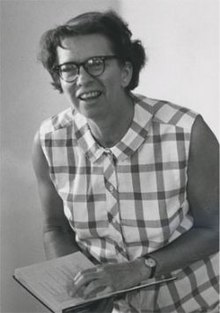
The ancient Agora of Athens is the best-known example of an ancient Greek agora, located to the northwest of the Acropolis and bounded on the south by the hill of the Areopagus and on the west by the hill known as the Agoraios Kolonos, also called Market Hill. The Agora's initial use was for a commercial, assembly, or residential gathering place.

Carl William Blegen was an American archaeologist who worked at the site of Pylos in Greece and Troy in modern-day Turkey. He directed the University of Cincinnati excavations of the mound of Hisarlik, the site of Troy, from 1932 to 1938.
William Bell Dinsmoor Jr. was an American classical archaeologist and architectural historian.

Dorothy Burr Thompson was an American classical archaeologist and art historian at Bryn Mawr College and a leading authority on Hellenistic terracotta figurines.
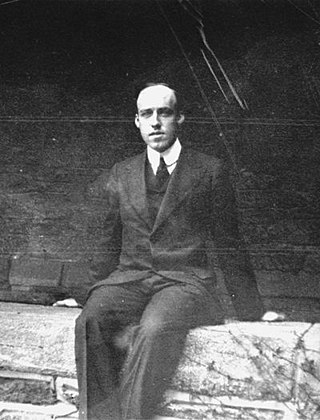
Rhys Carpenter was an American classical art historian and professor at Bryn Mawr College.
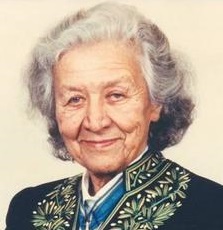
Jacqueline Worms de Romilly was a French philologist, classical scholar and fiction writer. She was the first woman nominated to the Collège de France, and in 1988, the second woman to enter the Académie française.
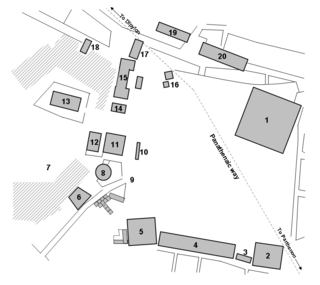
Stoa Basileios, meaning Royal Stoa, was a Doric stoa in the northwestern corner of the Athenian Agora, which was built in the 6th century BC, substantially altered in the 5th century BC, and then carefully preserved until the mid-second century AD. It is among the smallest known Greek stoas, but had great symbolic significance as the seat of the Athenian King Archon, repository of Athens' laws, and site of "the stone" on which incoming magistrates swore their oath of office.
Susan Irene Rotroff is an American classical archaeologist, classicist, and academic, specialising in the art, archaeology, and pottery of Ancient Greece. She was Jarvis Thurston and Mona Van Duyn Professor in the Humanities, at Washington University in St. Louis.

Virginia Randolph Grace (1901–1994) was an American archaeologist, known for her lifelong work into amphoras and their stamped handles.

Mary Alison Frantz was an American archaeological photographer and a Byzantine scholar. She is best known for her work as the official photographer of the excavations of the Agora of Athens, and for her photographs of ancient Greek sculpture, including the Parthenon frieze and works from the Temple of Zeus at Olympia.
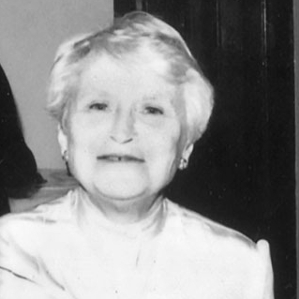
Sara Anderson Immerwahr was an American Classical archaeologist.

Barbara Tsakirgis was an American classical archaeologist with specialization in Greek and Roman archaeology, particularly of ancient Greek houses and households. She worked in the archaeological excavation sites in Sicily and Athens for her doctoral thesis from Princeton University on the subject of Hellenistic houses at Morgantina. Her thesis was published as The Domestic Architecture of Morgantina in the Hellenistic and Roman Periods (1984). She taught at the Vanderbilt University's Department of Classical Studies and was an associate professor from 1992 to 2019.
Ann Wheeler Ashmead is an American archaeologist who has co-authored comprehensive catalogues with archaeologist and Etruscologist Kyle Meredith Phillips, Jr. about the Greek Vase Painting collections of Bryn Mawr College (1971) and the Rhode Island School of Design (1976). She has also written the main published catalogue for the Antiquities Collection of Haverford College (1999). and many articles on Greek Vases.
Jenifer Neils is an American classical archaeologist and was from July 2017 to June 2022 director of the American School of Classical Studies at Athens. Formerly she was the Elsie B. Smith Professor in the Liberal Arts in the Department of Classics at Case Western Reserve University.

Marion Rawson was an American archaeologist. She is known for her work with Carl Blegen at Pylos in Greece and ancient Troy in modern Turkey. After her death, the University of Cincinnati established the Marion Rawson Professorship of Aegean Prehistory "in honor of her contributions to the field of Bronze Age Archaeology."
Evelyn Lord Smithson was a noted twentieth-century scholar of classics and Classical archaeology and an expert on Bronze Age and Early Iron Age Greece.
Cynthia Wright Shelmerdine is an American classicist and archaeologist, known for her researches into Mycenaean culture and history. She is Robert M. Armstrong Centennial professor emerita at the University of Texas, Austin.
Olga Palagia is Professor of Classical Archaeology at the National and Kapodistrian University of Athens and is a leading expert on ancient Greek sculpture. She is known in particular for her work on sculpture in ancient Athens and has edited a number of key handbooks on Greek sculpture.
Margaret Crosby was an American archaeologist and historian. Crosby graduated from Bryn Mawr College in 1922, and subsequently became involved in archaeology and ancient history, especially epigraphy and metrology, earning her PhD at Yale University. During World War II, Crosby joined the Office of Strategic Services (OSS) and worked as a cryptographer for the OSS' Greek Desk, deciphering reports and materials for the Allied Forces.

Mary Zelia Pease Philippides was an American archaeologist and librarian. She was librarian at the American School for Classical Studies in Athens from 1958 to 1971.
